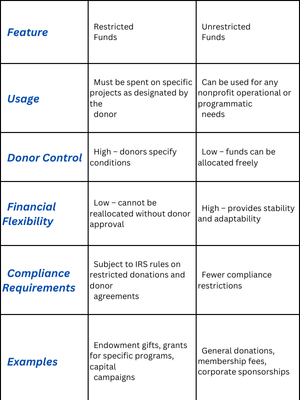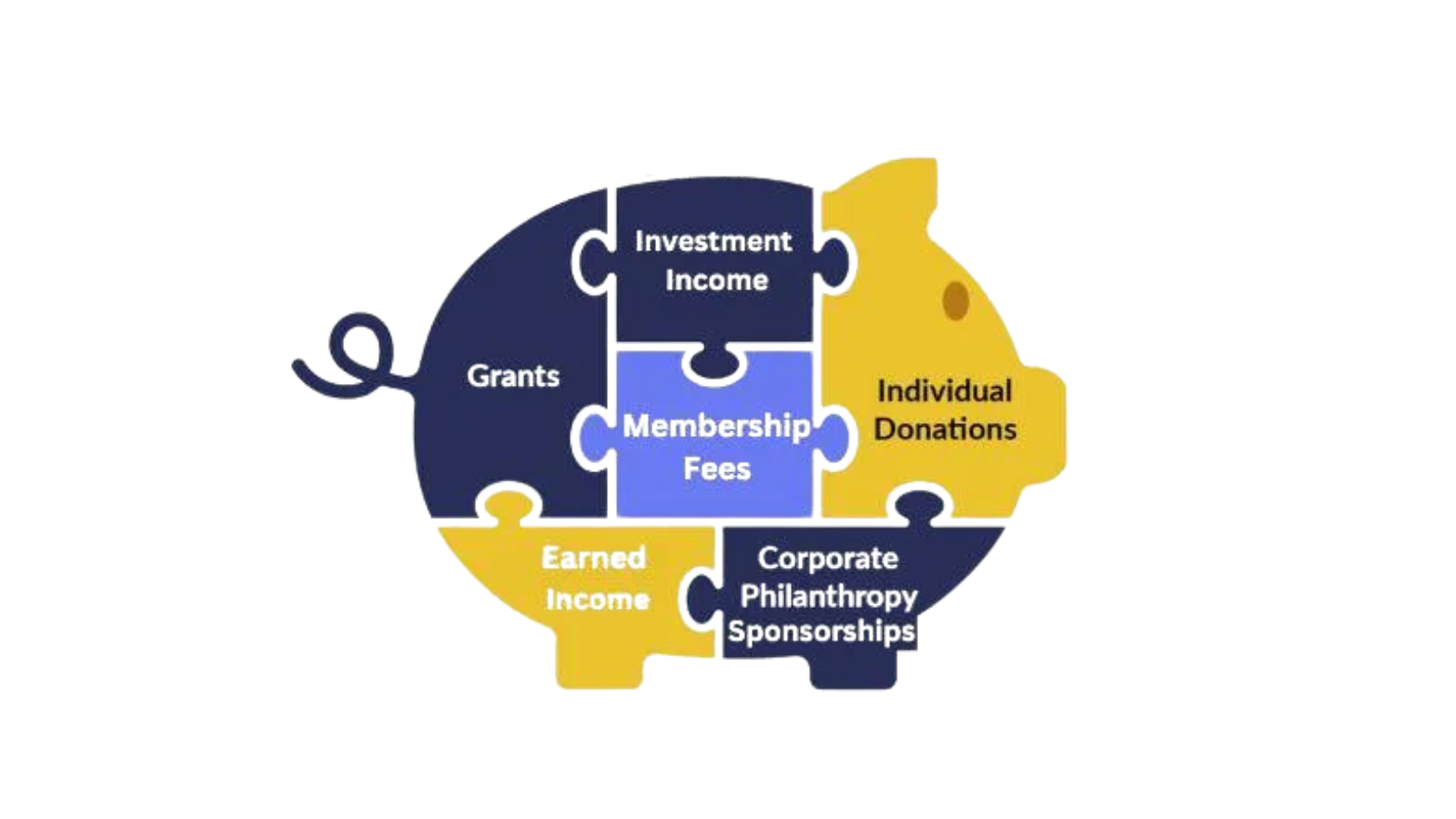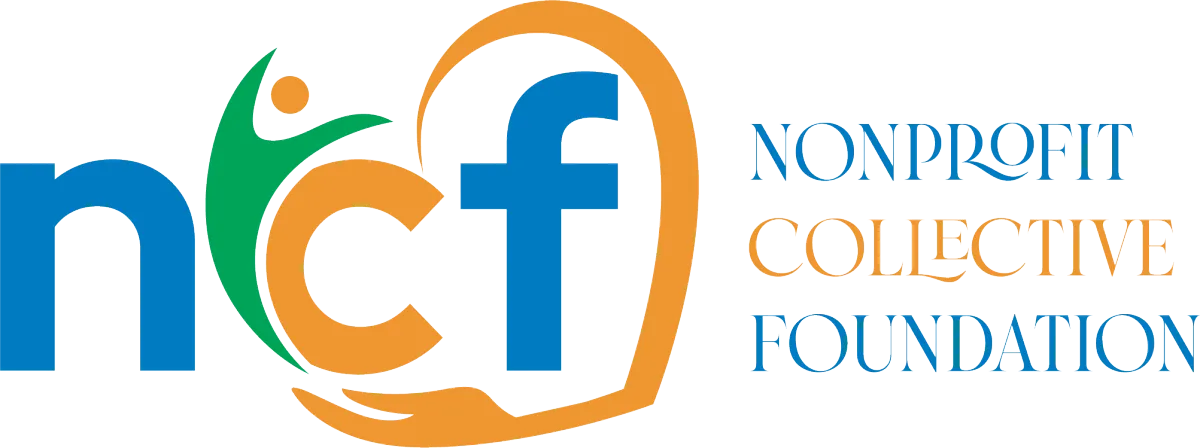Unrestricted vs. Restricted Funds: What Nonprofits Need to Know
Introduction
Nonprofit funding is the backbone of charitable organizations, allowing them to fulfill their missions and serve their communities. However, not all funds received by nonprofits come with the same level of flexibility. Understanding unrestricted vs. restricted funds is crucial for financial planning, sustainability, and compliance with IRS rules on restricted donations.
While restricted funds ensure donor intent is honored, unrestricted funds provide the financial flexibility nonprofits need to cover operational expenses and respond to emerging challenges. This guide explores the key differences between these funding types, their impact on nonprofit organizations, and best practices for managing these resources effectively.
What Are Restricted and Unrestricted Funds?
Restricted Funds
Restricted funds are donations or grants that come with specific conditions set by the donor. These funds must be used for a designated purpose, such as funding a scholarship program, building a community center, or launching a specific initiative.
Examples of Restricted vs. Unrestricted Funds
- Restricted Fund Example: A donor contributes $50,000 to a nonprofit with the stipulation that it must be used exclusively for a youth mentorship program.
- Unrestricted Fund Example: A $10,000 general donation that the nonprofit can use for operational costs or any area of need.
IRS rules on restricted donations require nonprofits to carefully track these funds and ensure they are used according to donor intent.
Unrestricted Funds
Unrestricted funds are donations that a nonprofit can use at its discretion. These funds provide financial flexibility, allowing organizations to cover operational expenses, staff salaries, marketing efforts, and other necessary costs.
Key Benefits of Unrestricted Funding
- Covers administrative costs and essential overhead expenses
- Enables rapid response to urgent community needs
- Supports long-term sustainability and growth
Nonprofits that struggle to secure unrestricted funding often face financial instability, as they cannot always use restricted funds to cover day-to-day operations.
Restricted vs. Unrestricted Funds: A Side-by-Side Comparison

IRS Rules on Restricted Donations
Understanding tax and compliance regulations is essential for properly managing restricted funds. According to the IRS rules on restricted donations, nonprofits must:
- Maintain separate accounting records for restricted and unrestricted funds.
- Use restricted funds only for the designated purpose stated by the donor.
- Provide accurate financial reports to ensure compliance and donor transparency.
- Avoid misallocating restricted funds, which could result in legal consequences and loss of donor trust.
For detailed guidelines, visit the IRS website.
Why Balancing Restricted and Unrestricted Funding Matters
The Nonprofit Starvation Cycle
Many nonprofits receive significant amounts of restricted funding but struggle to cover essential operational costs. This leads to the nonprofit starvation cycle, where organizations lack the unrestricted resources needed for sustainability. According to a study by the Bridgespan Group, over 80% of nonprofit leaders report that funders do not provide sufficient unrestricted support, making it difficult to maintain their organizations.
Case Study: How Unrestricted Funding Helped a Nonprofit Thrive
In 2020, XYZ Nonprofit, which provides disaster relief services, faced challenges due to a lack of unrestricted funding. While they received $2 million in restricted grants for emergency response efforts, they struggled to pay for operational expenses like staff salaries and technology upgrades. After launching an unrestricted giving campaign, they raised $500,000 in general operating funds, enabling them to scale their programs efficiently and respond more effectively to future crises.
How to Secure More Unrestricted Funding
1. Educate Donors
Many donors are unaware of the importance of unrestricted funds. Charity Navigator and the National Council of Nonprofits recommend educating donors through transparent impact reports that highlight how unrestricted funding enables long-term success.
2. Diversify Revenue Streams
Nonprofits can reduce reliance on restricted funding by:
- Establishing membership programs
- Securing corporate sponsorships
- Launching fee-based services
3. Apply for General Operating Grants
Some foundations, such as the Ford Foundation, MacArthur Foundation, and Open Society Foundations, offer unrestricted grants to help nonprofits cover core expenses.
4. Demonstrate Impact
Using data, testimonials, and case studies can help illustrate the necessity of unrestricted funds. For instance, according to a 2019 study by CEP, nonprofits receiving unrestricted funding reported higher effectiveness in program delivery and innovation than those relying solely on restricted funds.
Conclusion
Understanding unrestricted vs. restricted funds is crucial for nonprofit financial health. While restricted funds ensure donors' wishes are honored, unrestricted funding provides the flexibility needed for long-term growth. By maintaining a healthy balance between the two, nonprofits can thrive and continue making a lasting impact.
For more guidance on nonprofit financial management, check out resources from the National Council of Nonprofits or consult a nonprofit financial expert.






